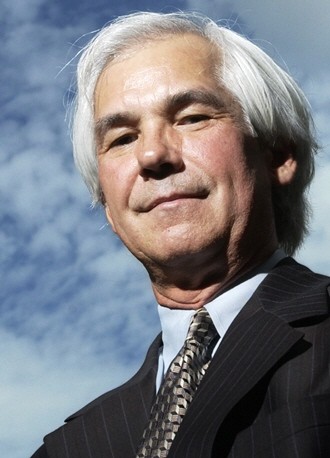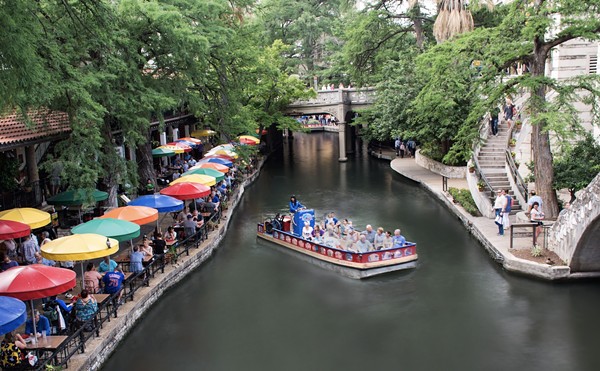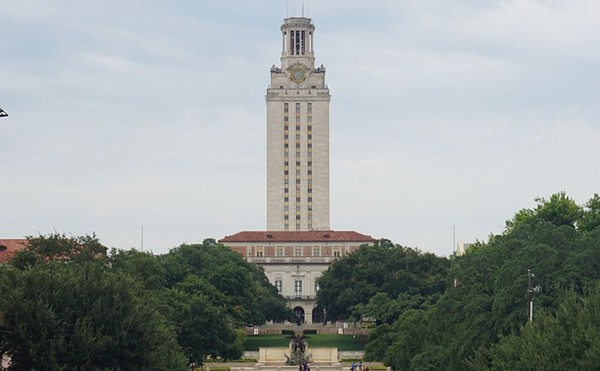| SA false-claims attorney Glenn Grossenbacher |
Our streets are a mess, we’re told. “San Antonio is one big block of broken asphalt,” in the words of one local commentator. Cracks and potholes are “everywhere.”
And the bill to fix them all is staggering — a total of $2 billion in street needs. So the $300 million for streets in the proposed May 12 bond package is just the first step in getting us fixed up.
Billions in needs.
Sounds familiar, doesn’t it?
Let’s go back to 1992, when Nelson Wolff was mayor, and city leaders were contemplating a bond issue. “Needs are great,” said Mayor Wolff. And City Public Works Director Joe Aceves chimed in with word that a 1988 study had found $1.2 billion in “needed street and drainage projects.” Two years later, as San Antonians faced a $25.6-million bond proposal on the May ballot, Public Works Director John German estimated $600 million to $1 billion in needed street and drainage improvements. How had all those “needs” accumulated? “Decades of neglect, as well as growth” was the official line. And San Antonio voters approved the bond program, with the promise of no increase in the tax rate.
In December 1998, former Express-News staffer David Anthony Richelieu (now a Current contributor) could write in the local daily: “Here’s the problem. San Antonio needs about $1.4 billion in repairs, improvements, and additions, but has less than $100 million available for new projects without raising city taxes.” It wasn’t a pretty picture. The following month, the Express-News reported that a survey of city needs “revealed that just fixing all the worn-out streets and installing needed signals and other traffic and safety improvements would total nearly $1 billion.”
So San Antonio voters approved a $140.2-million bond program in May 1999, with the promise of no increase in the tax rate.
Four years later, in early 2003, Public Works Director Tom Wendorf reported that the city needed $1.1 billion in street and drainage projects. “There’s not a whole lot of resources there to meet the needs of our community,” Wendorf told City Council.
And so we arrive at the spring of 2007, with $2 billion in street needs justifying a $550-million bond program on the upcoming ballot.
The “needs” rhetoric is remarkably the same, year after year, decade after decade, just like the promise of no tax-rate increases.
Yet what was most striking to me as I went back over the years of bond programs and rhetoric was that the billions in needs kept growing every year, with every new proposed bond package.
How could it be, that we spend millions on street improvements and still the “needs” continue to grow annually?
Part of the reason is that we aren’t really spending that money on improving existing streets, or fixing up that “big block of broken asphalt.” The $30 million allotted in this year’s program for widening and improving Bulverde Road will be buying us a big new road to serve the “Cibolo Canyons”/PGA development, not fixing potholes or broken asphalt. The $12.5 million designated for “Wurzbach Connectivity” will simply build part of Wurzbach Parkway — a road the state promised to pay for almost 20 years ago — not buy us “smoother streets.” The $4 million for “36th Street Extension through KellyUSA” will pay for a project that was part of the sales-tax proposal for Kelly improvements in 2000 that voters rejected. It’s a new street, not a fixer-upper.
So we’re really spending a good chunk of money for new street projects, not merely fixing up what we have. But that’s not the real reason hundreds of millions in “needs” turned into a billion, and then reached the magical $2 billion of 2007.
The real reason is growth. At the beginning of 1994, the city covered 359.5 square miles. For the 1999 bond issue, we were at 417.1. By the end of 2002, we hit 449 square miles. As we keep sprawling out over the Hill Country, we pass the two-lane stretches of asphalt that say “Begin County Maintenance.” Before long, they’ll be City maintained, and filled with the thousands of cars coming from new gated communities, heading to brand-new retail strip malls. And then they’ll “need” to be improved and widened to accommodate all that traffic.
Or there will be the promise of a new major employer, bringing lots of new jobs, that will require a tax abatement and the appropriate street improvements. And so the “billons” will grow.
In a few years, you’ll be reading about the $3 billion in street needs. But of course there won’t be an increase in the tax rate. There will be other needs as well, for new libraries, fire stations, and for the new schools that will be required. How can we generate more tax revenues to pay off the bonds to meet the needs? More growth, of course.
And so we grow to pay off the needs we have, and the more we grow, the more we “need.” Better plan on $4 billion.


















